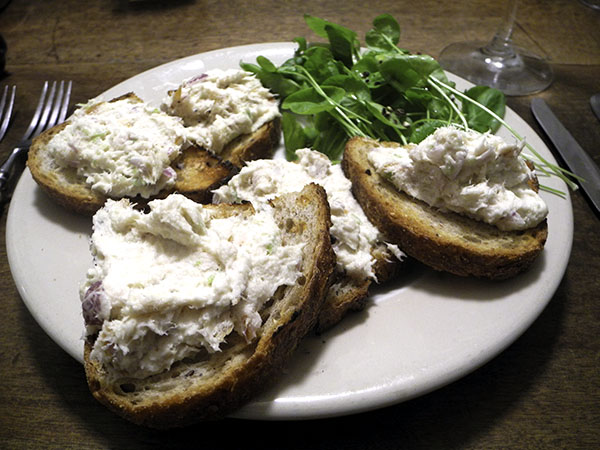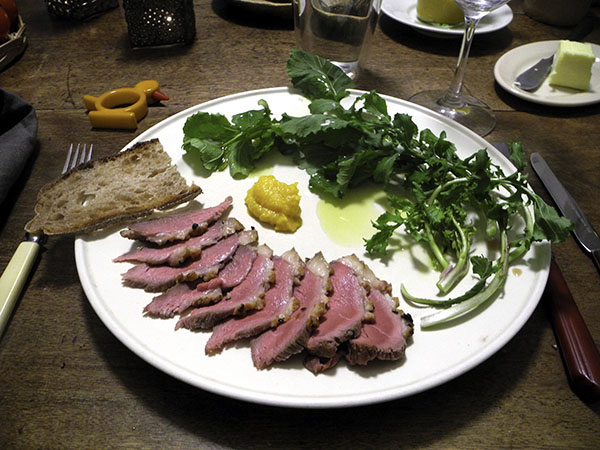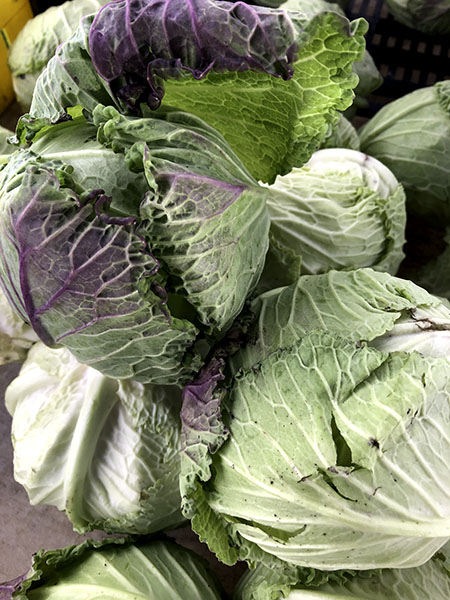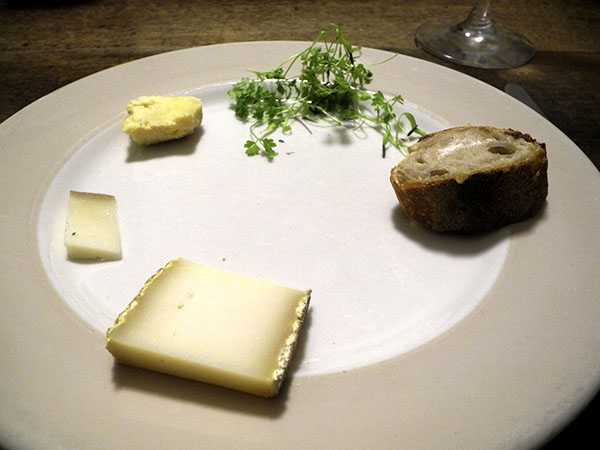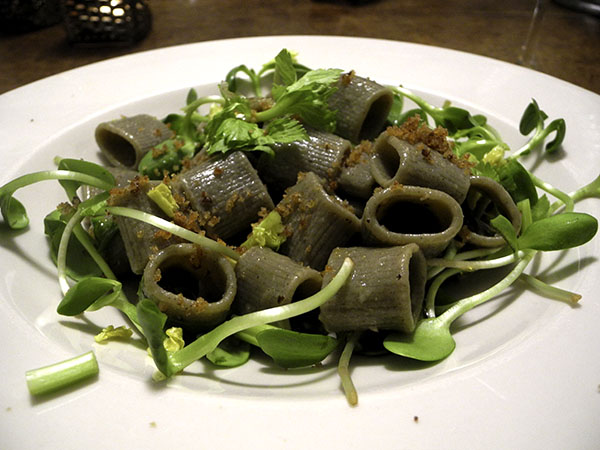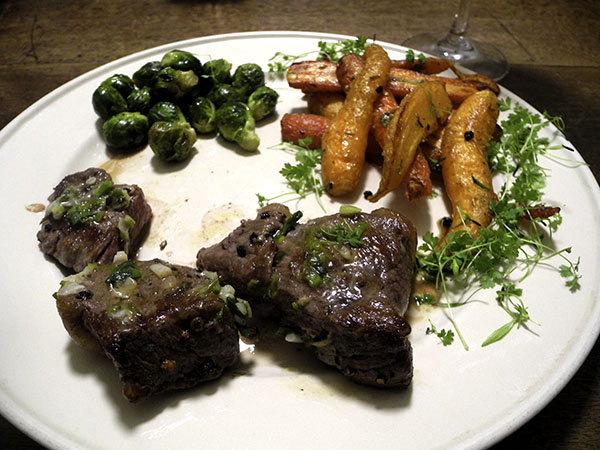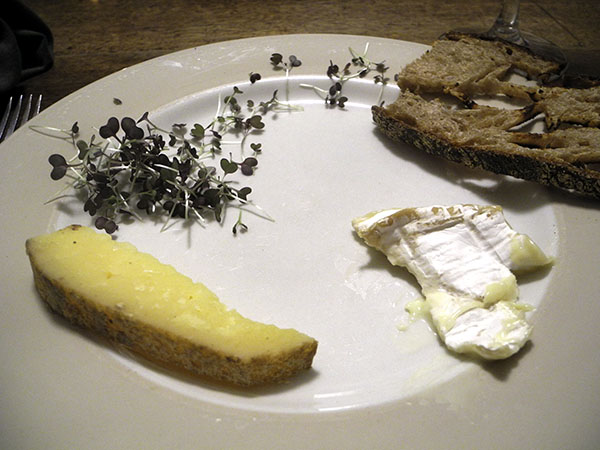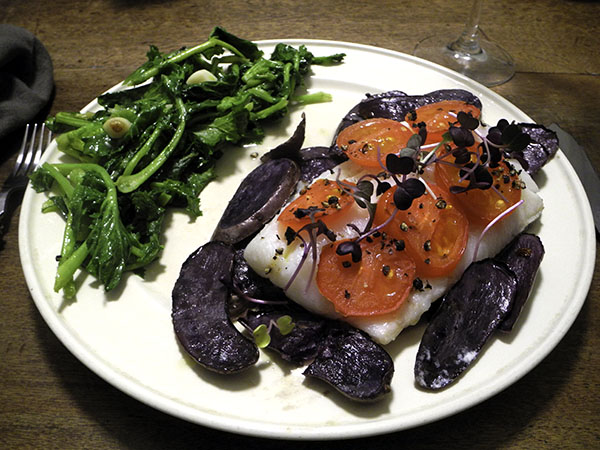
The aura of New England cod.
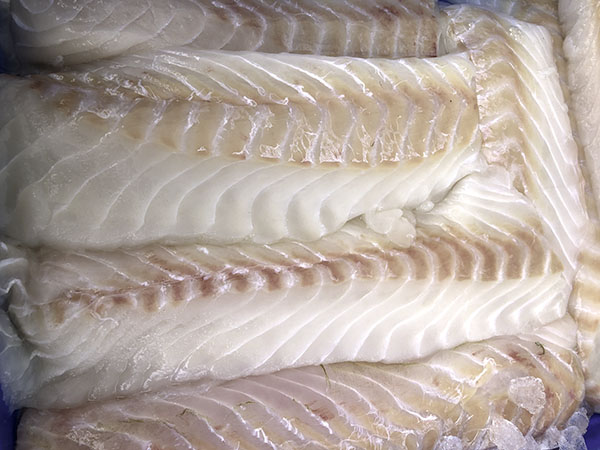
I think I’ve understood its emanation since at least the time I was cramming for a family trip to New England in the early 50’s, so when Glen Bickleman told me that the bucket of cod fillets he was displaying in his fish stall, caught out of eastern Long Island ports, were “whale cod”, my imagination went a little wild. I had thoughts of New England fishermen conjuring some heroic finned giant, a legend with which I was not familiar (since the mid-80’s, when I moved to New York from Rhode Island, I’ve thought of eastern Long Island as very much a part of the culture of New England).
Checking out the name on line once I was back home, I was only slightly disappointed to learn that it referred to a real phenomenon: “Old timers talk of the mythic “whale cod,” huge fish, as long as a man is tall, that [returned] every Thanksgiving for fishermen to load into trailer trucks bound for Fulton Fish Market in New York.”, reads one reference to the phrase.
More evidence of the scale of the giant real cod can be found in the entry on Wikipedia for the sculpture that hangs inside the House of Representatives chamber of Boston’s State House: “The Sacred Cod is a four-foot eleven-inch carved-wood effigy of an Atlantic codfish, ‘painted to the life’…’ (it’s significance is analogous to that of the wool sack in the House of Lords).
Glen may have been exaggerating a little yesterday, but we should remember that fishermen used to be shorter.
The dinner itself began with some unusual potatoes. They weren’t chosen for their color, but for the fact they were the only ones I had that were of both a suitable size and number.
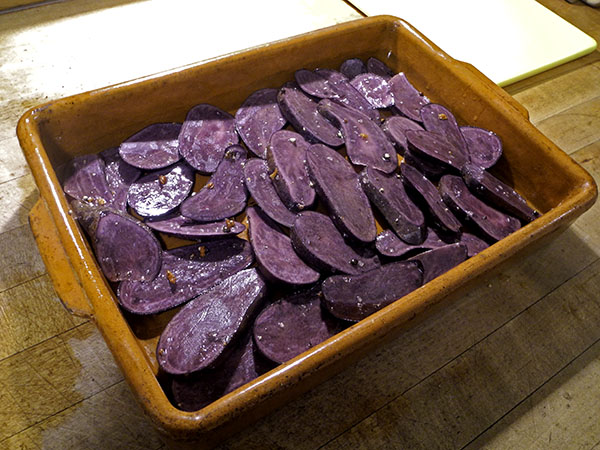
The potatoes were cooked first, but not quite all of the way; the cod fillet, divided into 2 sections, and the sliced tomatoes were then placed on top and the pan returned to the oven.
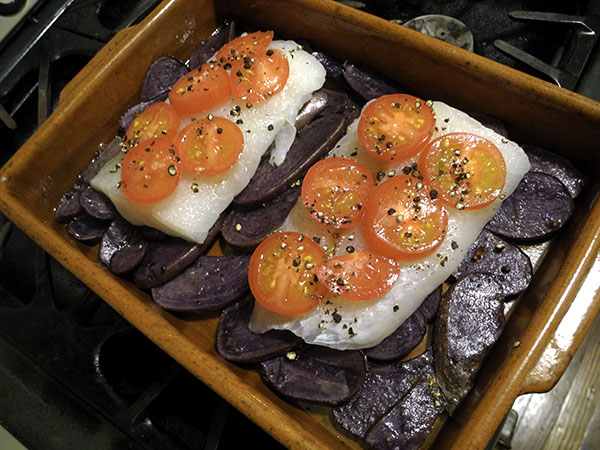
These potatoes are pretty spectacular.
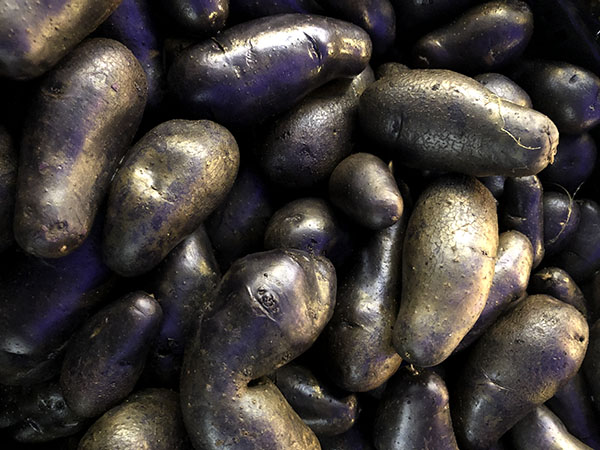
Over the years these almost-local Maine tomatoes have become an occasional kitchen mainstay [sorry about that one] for me through the relative dessert of New York winters.

I’ve learned, again, over many years, just how incredibly diverse even some of the vegetables with which we’d grown up assuming they had almost no variety can be. Although I certainly didn’t grow up with it in mid-century Detroit, I’m very fond of broccoli rabe, and I know that it comes in many forms, like so many other edible plants local farmers are bringing to markets these days.
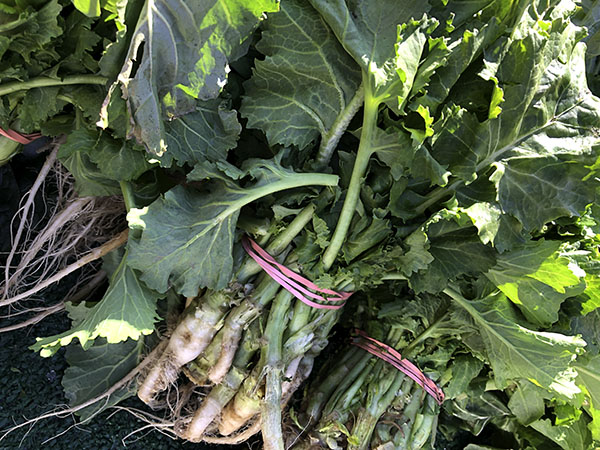
- one ‘whale cod’ fillet (in this case meaning an almost 19-ounce fillet from a particularly large cod) from American Seafood Company in Wednesday’s Union Square Greenmarket, washed and rinsed, halved crosswise, placed inside a deep platter on a bed of coarse sea salt, with more salt added on top until the pieces were completely covered, then set aside while a bed of potatoes was prepared by slicing lengthwise (to a thickness of roughly 1/4″) 12 ounces or so of ‘Magic Molly’ purple fingerlings from Norwich Meadows Farm, tossing them in a large bowl with a little olive oil, sea salt, freshly-ground black pepper, and a large section of an orange/gold home-dried habanada pepper, arranging the potatoes, slightly overlapping, inside a rectangular glazed ceramic oven pan, and cooking them for roughly 25 minutes in a 400º oven, or until they were tender when pierced, but not quite fully cooked, then, the cod fillets, having already been removed from the platter and their salt covering and thoroughly immersed in many fresh changes of water to bring down the saltiness (the soaking process also somehow gives the fish more solidity, which can be easily felt while it’s being handled it at this point; it’s pretty sexy), drained and dried, were placed inside the pan on top of the potatoes, drizzled with a little olive oil, sprinkled with some freshly-ground black pepper, partly blanketed with thin slices of 3 Backyard Farms Maine ‘Cocktail tomatoes’, the tomato seasoned lightly and the pan returned to the oven for about 15 minutes, or until just cooked through, fillets and tomato removed with a spatula (2 spatulas ae better), along with as much of the potatoes as can be brought along with each piece, everything arranged on the plates as intact as possible, the remainder of the potatoes then added and the servings garnished with micro purple radish from Two Guys from Woodbridge
- one bunch of broccoli rabe (aka rapini, among other names) from Phillips Farms wilted in a little olive oil inside a large antique high-sided tin-lined copper pot in which several medium rocambole garlic cloves from Keith’s Farm had been heated until slightly softened, the greens seasoned with sea salt and freshly-ground black pepper, divided between the 2 plates and drizzled with a little more olive oil
- the wine was a great Portuguese (Vinho Verde) white, Vinho Verde Loureiro, Aphros 2016, from Astor Wines
- the music was Verdi’s 1867/1886 grand opera, ‘Don Carlo’, Claudio Abbado conducting the Milan Teatro alla Scala Orchestra and the Milan Teatro alla Scala Chorus, with a great – and enormous – cast
